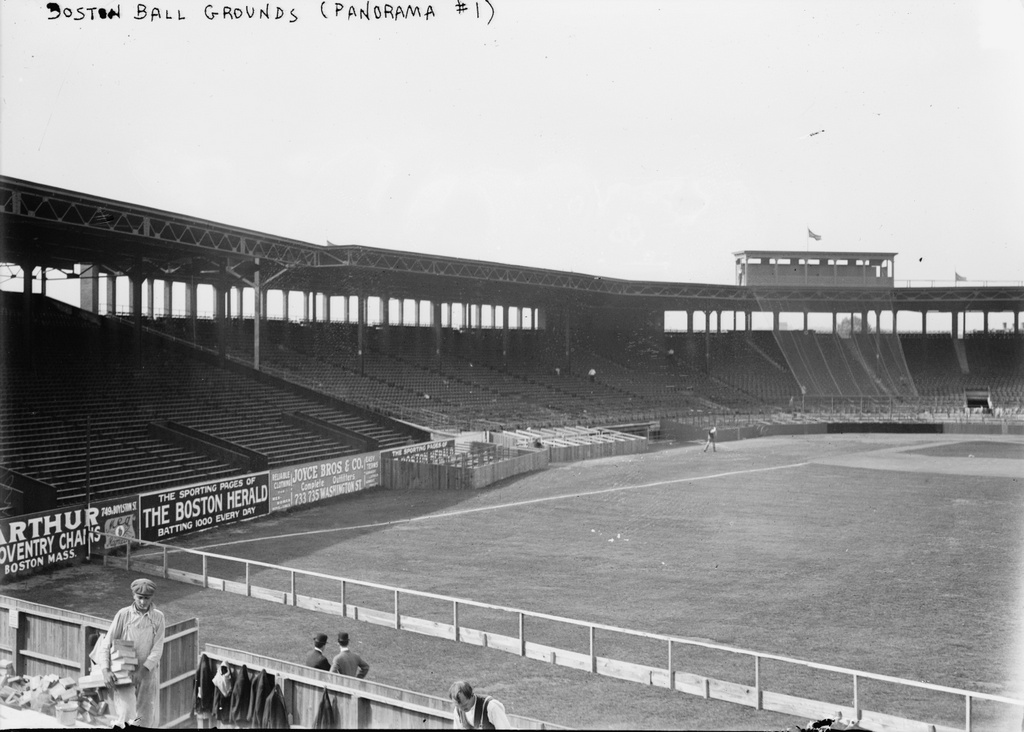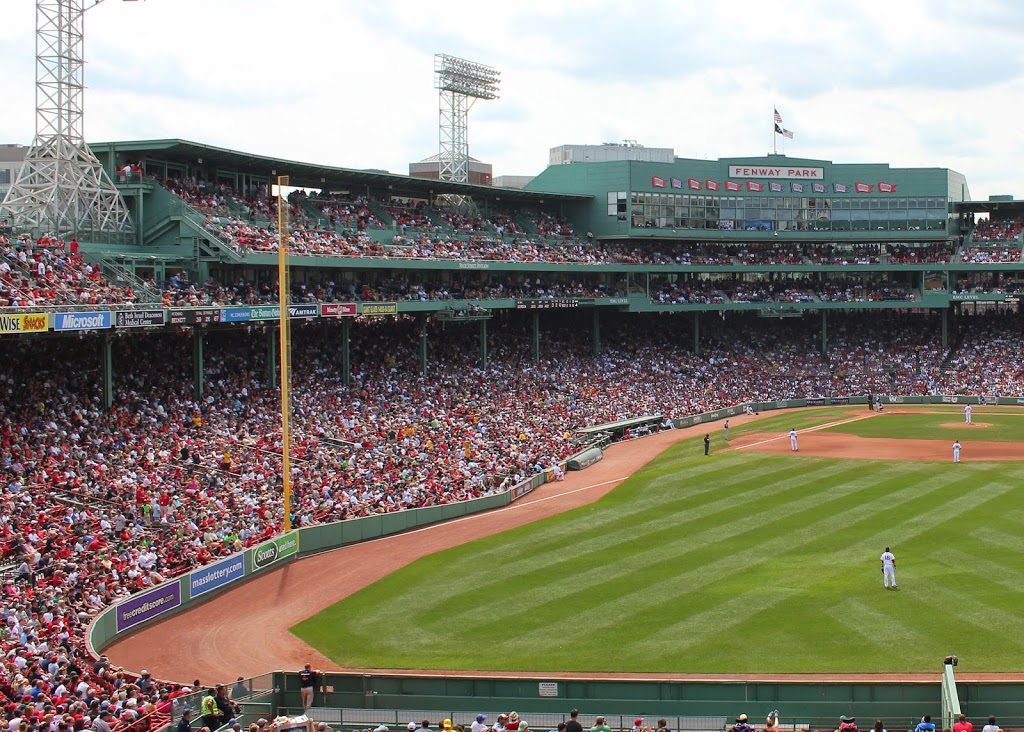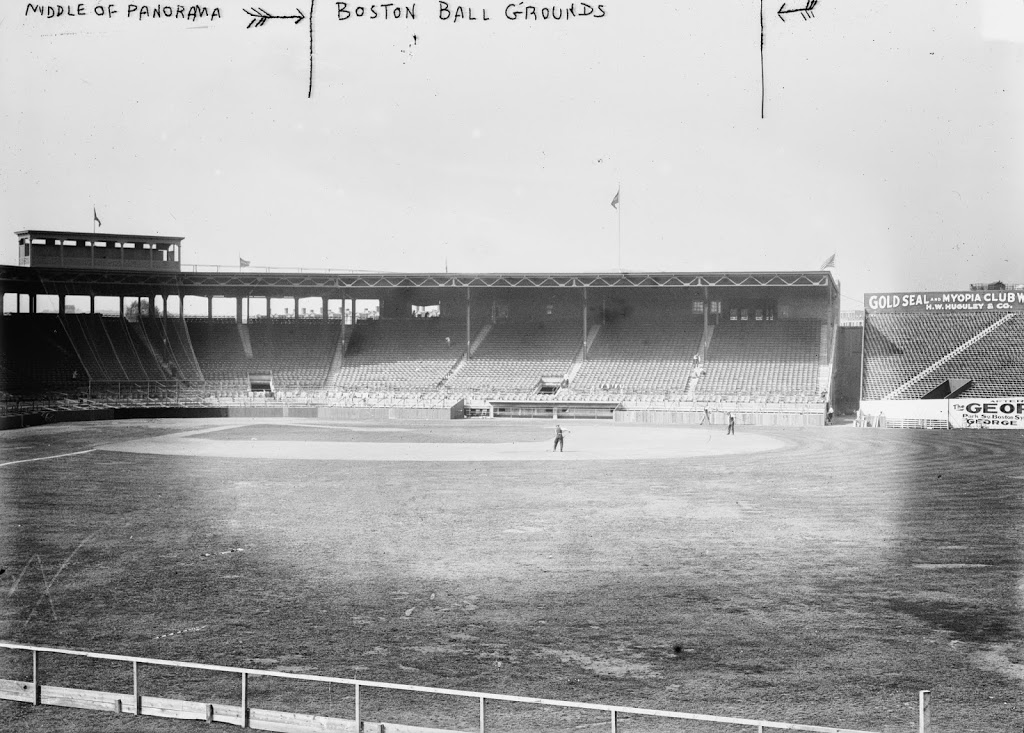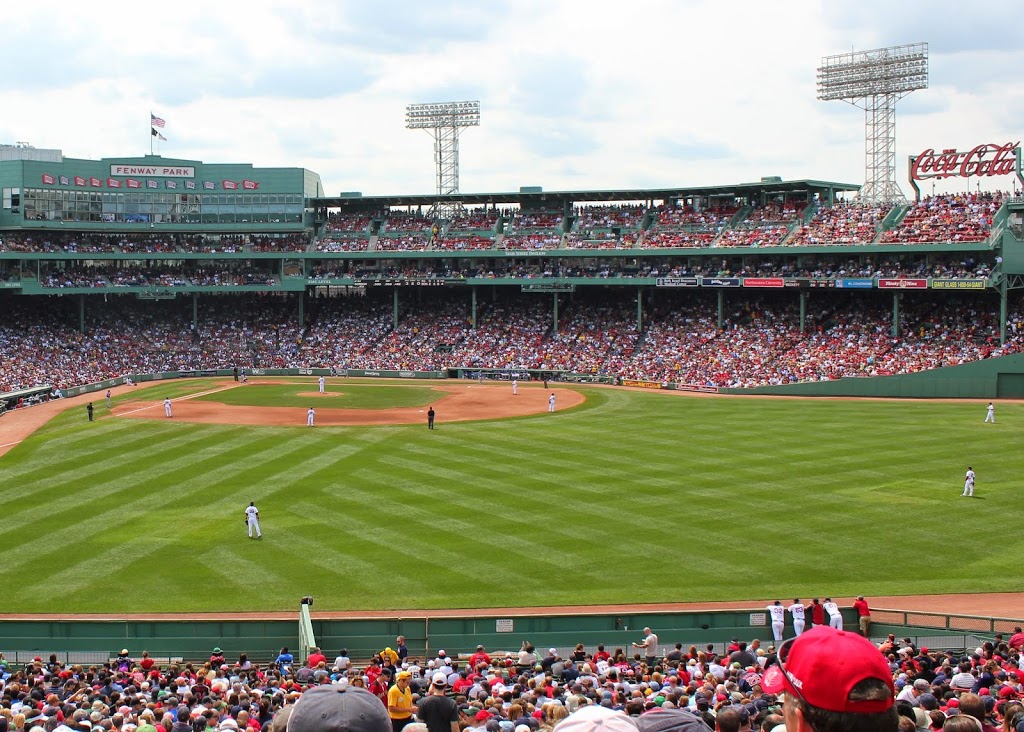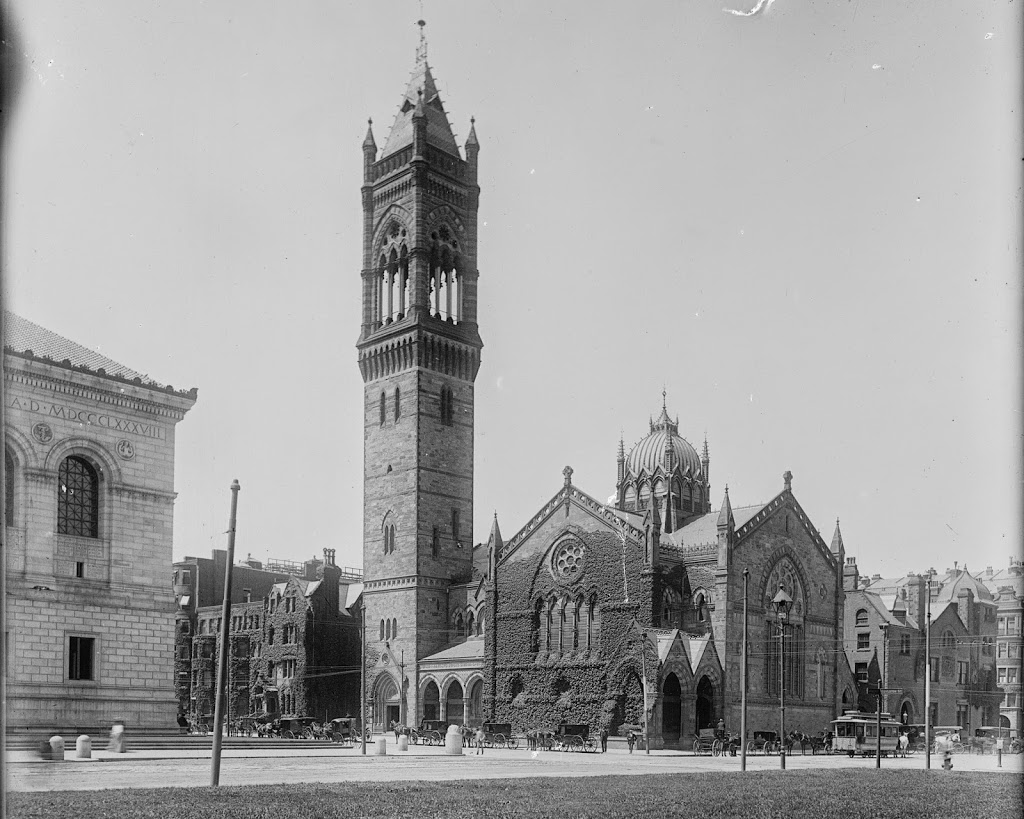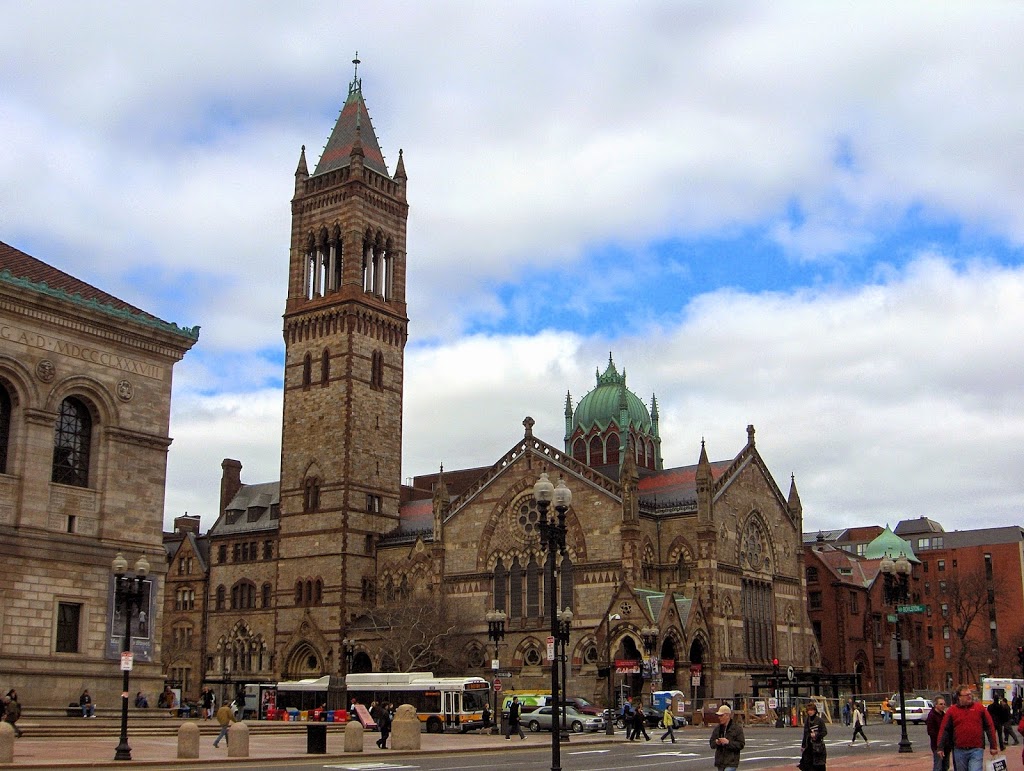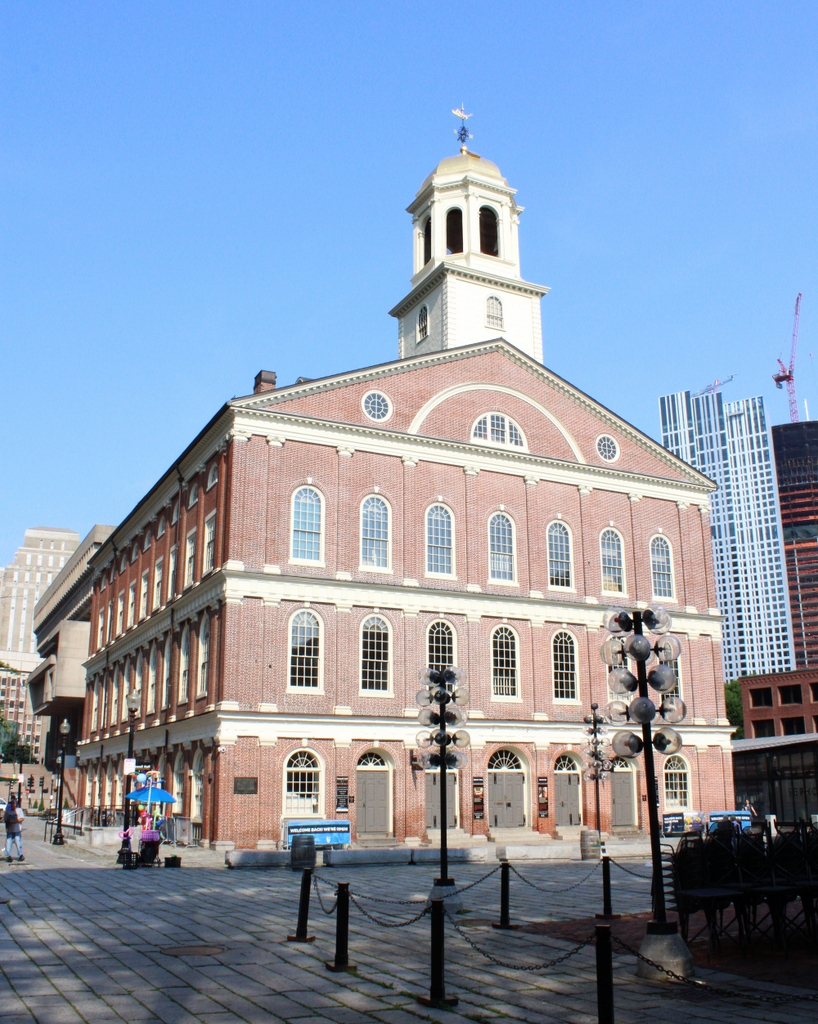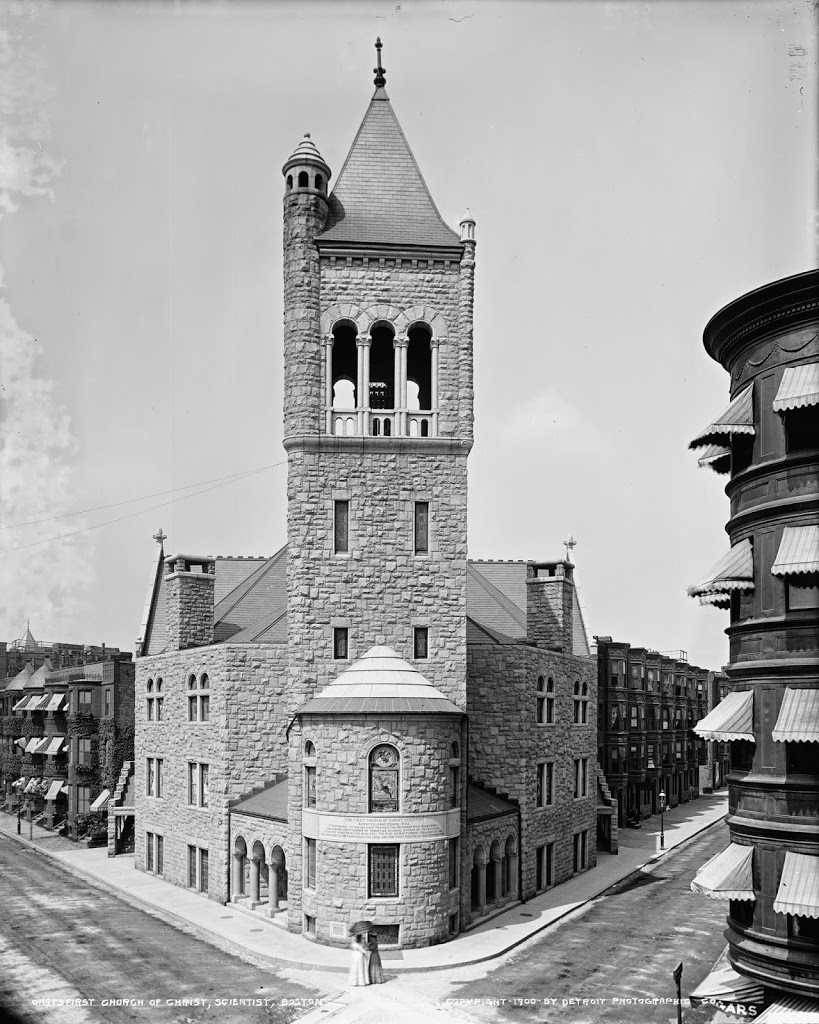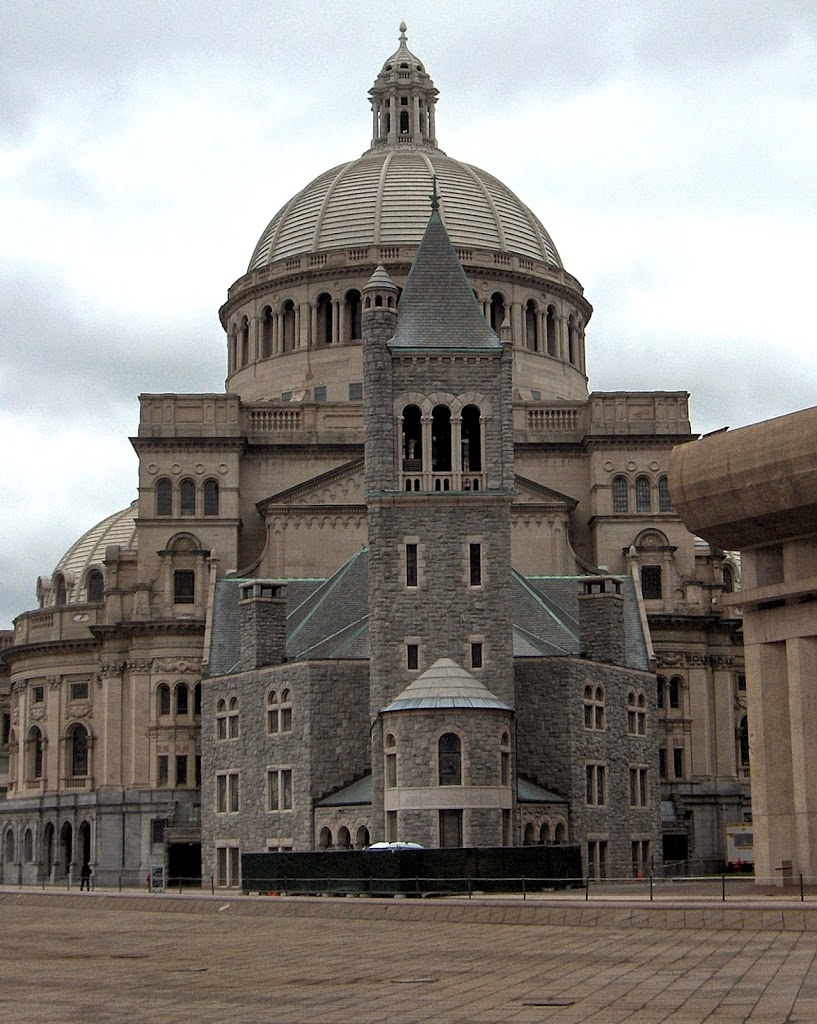The view of Old North Church, looking down Hull Street, sometime in the 1890s. Photo courtesy of the Library of Congress, Detroit Publishing Company Collection.
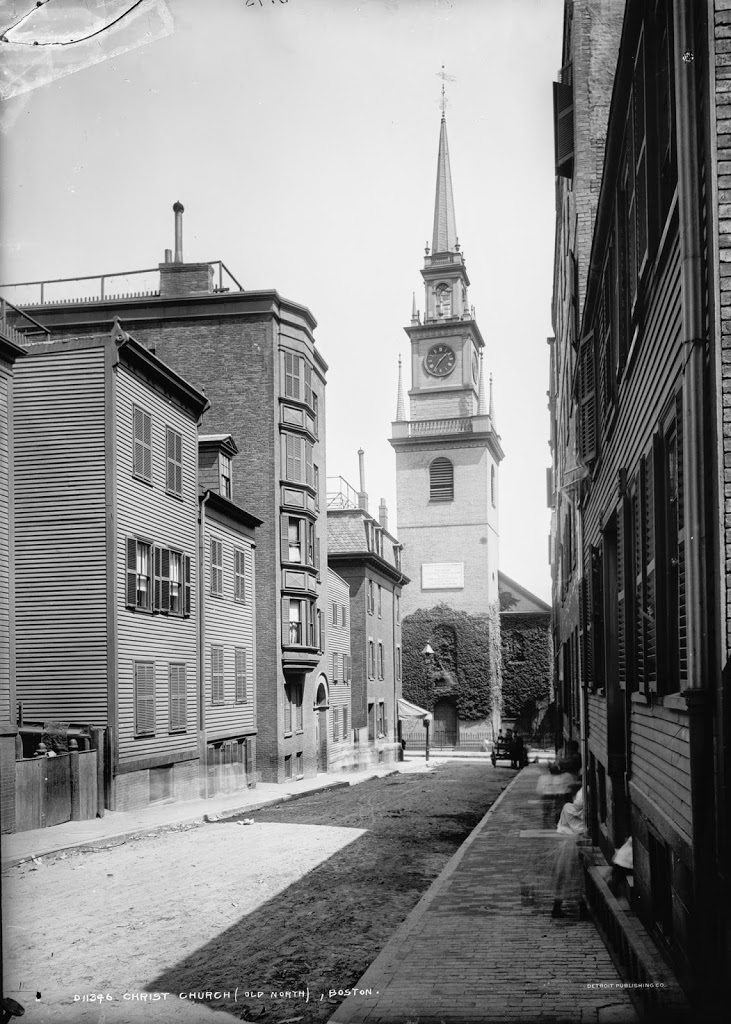
About decade later, around 1909. Photo courtesy of the Library of Congress, Detroit Publishing Company Collection.

Old North Church in 2018:

From 1909 to 2018, not a whole lot has changed here, aside from the addition of parked cars in the 2018 photo, the only differences for the most part are minor cosmetic changes. However, from 1898 to 1909, the scene looks very different – most of Hull Street was still dominated by small wood-framed buildings, some of which dated back to the mid 18th century. The closest wood building on the right-hand side of the street is the Galloupe House, which purportedly was used as General Thomas Gage’s headquarters during the Battle of Bunker Hill.
The centerpiece of all three of the photos, however, is Old North Church, which looks almost unchanged. In fact, though, the entire spire above the brick section is fairly new. Although the church was built in 1723, making it the oldest church building in Boston, the spire was destroyed in a storm in 1804. It was replaced with the one seen in the 1909 photo, which was destroyed by Hurricane Carol in 1954. Despite that, the church still looks very much as it did on the eighteenth of April, in Seventy-five.

